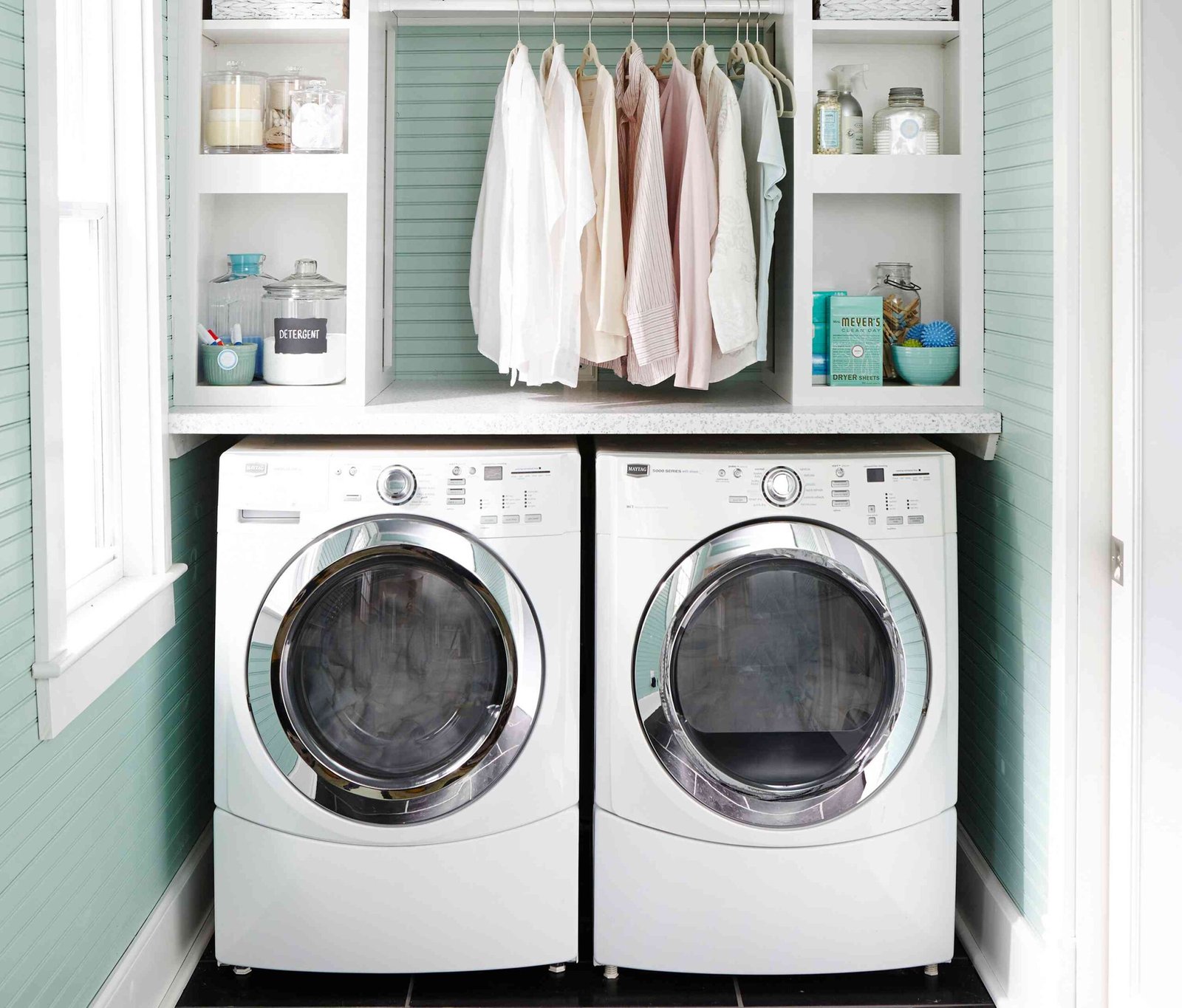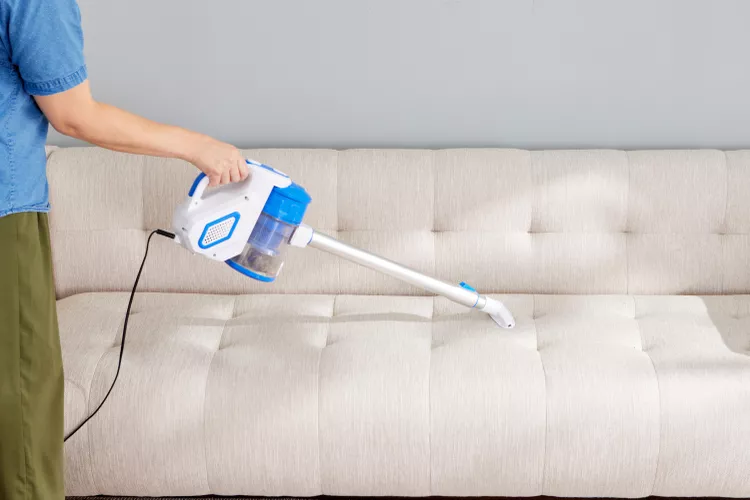This laundry setting will help you preserve your well-loved pieces while saving energy and money.
As prices soar on everything from groceries to gas, we’re all looking for a way to lighten the financial load. And when it comes to laundry loads, we’re sharing a painless way to cut down on the cost of your home’s energy bill. By simply turning the washing machine temperature dial down, you can stretch your dollars and the life of your clothes.
While heat helps sanitize some household items, the truth is that most pieces in our closets will gain more from being washed in cooler temps. Cold water keeps our go-to garments looking and fitting their best over time. What’s more, consistently using cold water when doing laundry reduces your carbon footprint—approximately 1,500 pounds less carbon dioxide for every 300 loads. Plus, a household can save between $60 and $200 per year by choosing a cold water cycle over hot or warm.
If you haven’t been paying close attention to the temperature you’re using when doing laundry lately, here’s your sign to choose cold as often as possible. Remember, you’re doing your clothes, your wallet, and the planet a favor each time. The following is a list of nine things that will always reap the benefits of a cold water cycle.
1. Colored Clothing
Whether it’s your darkest black jeans or your brightest pink blouse, a cold water cycle will keep their colors from fading and, therefore, keep them looking like new. With a particularly vibrant article of clothing or accessory comes the concern that the color will run or bleed. Cold water prevents that from happening. If you’re not already, get into the habit of separating colors from whites to avoid dye transfer. Always clean new clothes on their own and inside out, especially if they’re dark, before wearing or washing with other items
2. Denim
Jeans come in an array of shades, shapes, and sizes. Using the cold water setting when washing denim is the best way to ensure that pairs stay precisely how they looked and felt when you first tried them on. We’ve already explained how cold water will fend off color fading, but it also works particularly well with this material to retain its original fit. When exposed to heat, denim fibers will naturally contract and lose moisture, which, in turn, is what causes the garment to shrink. On the other hand, cold water is much gentler on your jeans, and it shows.
3. Delicates
Fine fabrics such as silk, satin, and lace deserve a gentle touch. As you now know, if hot water is aggressive on denim, it will undoubtedly be too much for your more delicate things. Instead, stick to cold water, whether you wash pieces by hand or, secure them in a mesh laundry bag and run the machine.
4. Swimwear
To keep bathing suits in stunning condition all summer long, treat them as you would your delicates. Although they’re made of a combination of synthetic materials (like nylon and spandex), they’re prone to fading and pilling. Hot water will only aggravate the fibers and, therefore, cause swimwear to stretch out. Either hand wash in cold water or place suits in a mesh bag before choosing the washing machine’s cold cycle.
5. Activewear
How you wash your workout clothes can be up for debate. If pieces are exceptionally sweaty or stinky, a hot water cycle will help eliminate stubborn bacteria and odors. However, the material that makes up most activewear will hold up better if cleaned in cold water. Aim to wash moisture-wicking garments in cold water most of the time and alternate with hot whenever they need a boost.
6. Knitwear
Caring for sweaters can indeed be a precarious process. While higher-end knits are usually best handled by a dry cleaner, we believe you’re more than capable of tending to most of your collection at home. One of the most important things to remember is that cold is the default temperature you should use whenever you wash a sweater. As with denim, fibers such as wool will start to shrink if exposed to heat. Hot water can also cause knitwear to become matted. On the flip side, cold water will maintain a sweater’s soft shape.
7. Heavily-Stained Items
Hot water does a beautiful job of keeping whites bright. Yet, when it comes to tackling really tough stains, you’ll want cold water in your corner. Heat can inadvertently cause untreated stains to saturate the material more before setting in, whereas cold water will work to lift stains, so you have a better chance of removing them.
8. Heavily Wrinkled Items
Did you know that smoothing wrinkles out can actually start in the washer? Although the heat from a steamer, an iron, or even the shower tends to get all the credit for smoothing garments out, the cold water setting keeps them relaxed and limits the chance of wrinkles forming in the first place.
9. Everyday Essentials
Cold water is the safest bet for the clothes you wear day in and day out. Those comfort items you continually gravitate to get a lot of love, but they also go through a ton of wear and tear. Washing your casual clothes in cold water is a no-brainer because it will help to extend their lifespan so you can keep wearing them to your heart’s content.
For more Better Homes & Gardens news, make sure to sign up for our newsletter!
Read the original article on Better Homes & Gardens.




